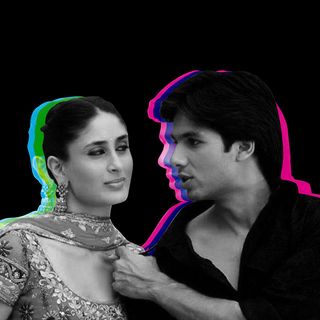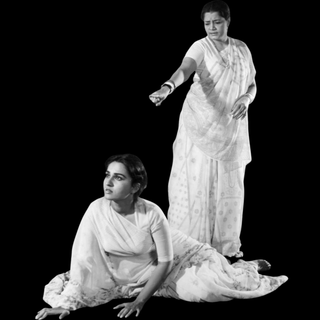
What the Loss of Movie Theaters Means for a Culture
By endangering the legacy of cinema halls, the pandemic has denied people a gateway to entertainment, and a part of their own selves.

For some, an expedition to the cinema hall is akin to a religious experience. Film historian Debashree Mukherjee’s first memory of visiting a huge picture palace in Visakhapatnam dates back to the 1980s. “Samudrika,” she recalls, was “deliciously old world and opulent, with a magnificent carpeted winding staircase and chandeliers.”
The mystical experience seems deeply familiar. The pitch-darkness, being ushered to seats with tunnels of torchlight, collective laughs and gasps cutting through cinematic plots, tension and emotions reigning supreme. With each unique viewing, the cinema and viewer become bound in a sacrosanct relationship. This legacy has been decades in the making — theaters have become spaces for community interactions, anchored activities, and symbolized the individuality and aspirations of people.
With Covid19, it is jarring to think of these experiences as those belonging to the past or those resigned to longing. The absence of the silver screen in the backdrop takes away the emotional escape and alters people’s engagement with cinema and its many stories. “Not being able to go to the theatres,” Mukherjee says, “has been a challenge and has taken away some of the flavor, or rasa, from the experience of cinema for me.”
It is not only the loss of physical space and experience that people lament — but of a cultural legacy that is slowly becoming endangered.
***
Cinema halls are one of the few remaining accessible community spaces that give cities a “public character.”
The cinema hall brought in the first homogenized spatial experience across class and caste in modern India, Madhusree Dutta, a cultural activist and filmmaker, argues in a blog post. “Though there were differently priced tickets and a hierarchy of seats,” she notes, “the consumption of the film happened in the same space and at the same time for a diverse people – something that… is an essential aspect of public culture.” The idea of being part of the “public” thus thrives with intellectual and individual stimulation.
“A heterogeneous public gathers for a homogenous experience – viewing of cinema,” Dutta adds. Cinema was always meant to be a collective experience; think of the emergence of “bungalow” cinema or “tent” cinema in the early days that encouraged screenings.
Today, there are hardly any other such physical spaces that allow people to experience culture collectively, without hindering anyone’s boundaries. Elaborate melas — Diwali, handicrafts, or just general celebrations — have gotten scant in an urban setting.
Related on The Swaddle:
What Do We Lose When We Don’t Inhabit Physical Spaces Like Offices, Universities?
As unique spaces, cinema halls lead to the evolution of culture itself. Discussions and interpretations of a movie are influenced by the experience of watching it. The “indefinable adrenaline rush that comes from viewing a film in a large group,” as Kaleem Aftab notes in BBC Culture, “with audiences feeding off each other to create an intoxicating atmosphere” is hard to replicate.
For Usha Iyer, a professor of cinema studies at Stanford University, it is the sense of community that theaters offer that’s paramount. “That shared community of spectators is a very special thing that sitting in front of my TV cannot replicate,” she says.
A colleague wistfully summarizes how a “collective euphoria comes to guide and enclose the dark cinema.”
It is the idea of engaging with people you wouldn’t otherwise meet or experiencing the movie through the way the audience manifests the story in their reactions. While watching “Kaala Patthar” (1979) in Ajmer, a writer recalls the audience in the packed house joining hands to express their dislike of the evil coal miner. “You can feel so much when the theater’s dead silent, hanging on every word, drinking in the giant faces on the screen,” James Lileks wrote in Inforum.
And while digital streaming bridges the spatial gap in accessing cinema, the act of watching, say, a Marvel movie or a James Bond thriller, carries an instinctive association with the cinema. A friend talks about how although “WandaVision” was brilliant, watching it on the big screen is a visceral pleasure she sorely missed.
Think of every time star Rajnikanth’s movies release, it is almost a ritual, where people line up from 4 a.m., burst crackers, and offer milk abhishekam to cutouts. A couple even got married outside the cinema to mark the release of “Petta” — a stage was erected and vows exchanged in the shadow of Chennai’s Woodlands theater.
These theaters have also seen the genesis of Indian culture in dramatic proximity. The story of how the cinema came to New Delhi in 1927 reveals the political milieu of the time — the earliest halls opened in Shahjanabad and Connaught Place doubled as assembly rooms, then part-time venues for film screening, and eventually permanent theaters. Delite Cinema located at the edge of Old and New Delhi continued not only to screen films during the tumultuous years of the 1971 war but also gave war updates to patrons. Other cinema halls functioned as dance halls or were used to stage plays and musicals. Be it an ornate window at Agra’s Roxy Talkies or an apsara drawn over the lobby of a theater in Pune, the architecture of these theatres also becomes markers of a city.
“Cinema halls were (still are, to a lesser extent) the landmarks for the neighborhoods and cultural signifiers for the local population,” notes Madhusree Dutta.
“Mona, Pearl, Veena, Ashok, Roopak, Apsara, Regent…If these Patna cinemas were not there in my life, I would have no heroes, no heroines, no dreams, no imaginations,” journalist Ravish Kumar recalls in “Reel India.”
In a country like India, theatres also act as opportunities for people to experience various cultures they wouldn’t have encountered otherwise. Even in 1950s Bangalore, cinema halls were showing not only locally produced Kannada films but also films from Bombay, Andhra Pradesh, Tamil Nadu, and Kerala in regional languages. All this alongside English movies from Hollywood. “A person can … go from one culture to another; world cultures, local cultures, you have so much choice!” Lakshmi Srinivas wrote in her book “House Full.”
Cinema halls inevitably become extensions of people, their ideas, their whims. This is for three reasons — one, the physical space of a cinema hall pushes the movie-watching experience to exist outside the periphery of life and work. People to earmark time for travelling, purchasing tickets, eating snack, having spontaneous interactions, or even dressing up differently. “A night at the movies,” Mukherjee notes, “felt like a VIP event.” This is also underscored by Marcus Loew, a Hollywood filmmaker, who commented that “we sell tickets to theatres, not movies.”
Going to a cinema hall once a week was a family outing, allowing people to experience something bigger than themselves — literally and metaphorically. The mahaul of a cinema hall, as Mukherjee calls it, is craftily set by other activities. In the single-screen talkies, kiosks and other pop-up stalls erupt simultaneously to round up the movie-watching experience.
Two, the theatre allows people to simultaneously experience joy, loss, love, escape, freedom, and opportunity for moviegoers. For some, it’s a place for intimacy and love, with people flocking to late-night shows or other scarcely populated slots for rare moments of solitude with their partners. For others, the act of visiting the cinema hall is associated with carving time for oneself. Even as a means of escape, the cinema hall is at once a community and a private offering. Naturally, as the big screen is replaced with smaller screens, movie-watching outside the cinema hall loses the deep emotional investment.
And three, as a site of leisure activity, cinema halls become essential tools for public well-being. Halls during World War I in the United Kingdom, for instance, were kept open as some argued they “kept people occupied, and it helped keep them calm.” Even now, the prospect of escape is most closely associated with watching a movie.
***
Related on The Swaddle:
Anthropologist Walter Armbrust asked in reference to the cinema in Egypt: “What happens in … societies when the lights [of the cinema hall] go down?”
The demise of any physical space changes the way people engage with the culture around it. A dwindling number of theatres will inevitably also impact what kind of stories are told. Where we watch films – in large single-screen halls, smaller multiplexes, on TV sets, laptops, and phones – all affect the kind of films that are made.
For instance, “In the 1990s, the multiplex enabled a new wave of indie filmmaking… as a niche urban audience was able to support low budget films by paying higher ticket prices, and exhibitors could risk running an experimental film in a theatre with few seats,” Mukherjee adds. The smaller audience size allowed for more variety in genres too.
In the absence of physical cinema halls then, the viewership pivots to streaming platforms — OTTs like Netflix, Hotstar, Mubi. Consequently, the movies that will be made will be in line with an urban, niche audience that has access and subscriptions.
The term “silver screen” has always been shorthand for stardom, celebrity culture, and storytelling. Understanding what the theatre means to a spectrum of people will inform future efforts to restore or build these community spaces.
However, Usha Iyer believes the hope the cinema hall captures is going nowhere — it will continue to be a vibrant space for years to come. “In the 1980s, many people had predicted the death of the movie theater as people retreated to their homes and TV sets or video parlors, but the cinema hall returned as a vibrant social space in the past two decades,” she notes.
Author Namrata Joshi, in her book “Reel India,” recalls watching Shyam Benegal’s ‘Welcome to Sajjanpur’ (2008), “…complete with cracking chairs, whirring fans, and the pleasurable anticipation of the interval.” For her, the experience was “replete with the promise of a patties-and-cream roll treat.” The cinema is but one piece of the puzzle that makes up the movie-going experience.
Moreover, after several months of being cooped up in front of television and computers, people yearn for the experience of watching a movie in a hall, replete with hope and magic. In the famous words of Shah Rukh Khan, Picture abhi baaki hain, mere dost.
Saumya Kalia is an Associate Editor at The Swaddle. Her journalism and writing explore issues of social justice, digital sub-cultures, media ecosystem, literature, and memory as they cut across socio-cultural periods. You can reach her at @Saumya_Kalia.
Related


Can’t Let Go: Of Self‑Love in ‘Jab We Met,’ Despite Imtiaz Ali’s Man‑Children
